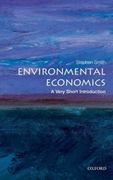Kindly answer the following questions
Simple linear regression is a statistical method that allows us to summarize and study relationships between two continuous (quantitative) variables: One variable, denoted X, is regarded as the predictor, explanatory, or independent variable. The other variable, denoted Y, is regarded as the response, outcome, or dependent variable. Suppose that we are given n-i.i.d observations { (x;, y;)}"_, from the assumed simple linear regression model Y = BIX + Bo + . Answer the following questions on simple linear regression. 5-a. Denote 1 and Bo as the point estimators of B, and Bo, respectively, that are obtained through the least squares method. Show, step by step, that the two point estimators are unbiased. Derive the least squares estimator of of and determine whether it is unbiased or not. Show your work step by step. 5-b. Calculate _'_1(yi - Bix; - Bo) (Bix, + Bo). Determine whether the point (X, Y) is on the line Y = 1X + Bo. Explain your reasoning mathematically. 5-c. Using the maximum likelihood estimation (MLE) technique, derive a point estimator for the coefficient B1 and the intercept Bo, respectively. Determine whether the point estimators that you obtained via MLE are unbiased or not. Justify your conclusion mathematically. 5-d. Calculate the variance of the four estimators from Questions 5-a and 5-c, respectively. Show your work step by step. 5-e. Suppose that we are using the simple linear regression model Y = B1 X + Bo + 1 while the true model is Y = 1X1 + B2X2 + Bo + 82 where Bo, B1, and B2 are constants. We assume that the distributions of &, and e2 are both N(0,02), i.e., normal distribution with variance o?. We further assume that the two noise variables are uncorrelated. Find the least squares estimator of B, in this case and determine whether the point estimator that you obtain is biased or not. If it is biased, calculate the bias.Question #2; Two firms are deciding simultaneously whether to enter a market. If neither enters, they make zero profits. If both enter, they make profits -1, since the market is too small for two firms. If only one enters, that firm makes high profits. This game is summarized in the following matrix: Firm 2 H Firm 1 Enter Do not enter Enter -1, -1 10, 0 Do not enter 0. 5 al. What are the pure-strategy Nash Equilibria of this game, if any? by Now assume that firm 1 can enter the market with probability p and firm 2 can enter the market with probability q. Write down the expected payoff of each firm for each course of action (enter, do not enter). cl Find the Nash equilibria in mixed strategies. O e P W acer+ Quizaquiz probGuid=(NAPCOA$01010001003594-40200400008cix-smedcalle1-00018ck-8_14919842 10 C Q Sand 1. Pricing foreign goods As Aa The exchange rate Is the price of one currency in terms of another currency. An exchange rate specifies how many 1. Pricing foreign goods An Aa The exchange rate Is the price of one currency in terms of another currency. An exchange rate specifies how many units of one country's currency equal one unit of another country's currency. Suppose the following table forecasts exchange rate data for November 26, 2014, in terms of U.S. dollars per unit of foreign currency. Use the information in the table to answer the questions that follow. U.S. Dollars ($) Foreign Currency per Unit of Foreign Currency Brazilian real (R$) 0.3666 Canadian dollar (CDN$) 0.8493 Euro (C ) 1.3288 Japanese yen (#) 0.009748 Mexican peso (MEX$) 0.0889 UK pound (E) 1.8965 Suppose that on November 26, 2014, a children's doll handmade in Japan is priced at V1,000. The approximate U.S. dollar price of the doll would be If the exchange rate for the U.S. dollar-Japanese yen falls from the rate given by the table to $0.0047 per yen, the value of the U.S. dollar relative to the yen. Grade It Now Save & Continue









